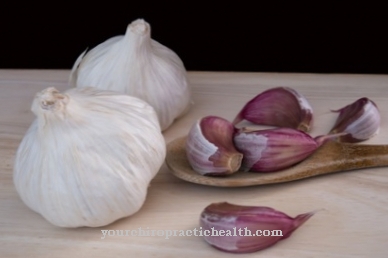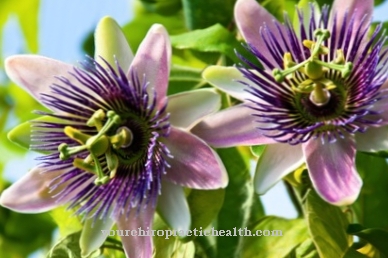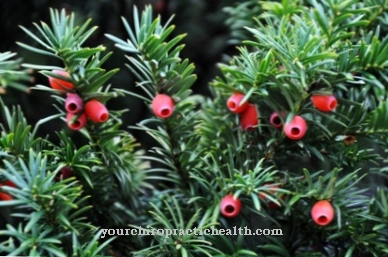The ancient Greeks and the Celtic Druids already knew the very old, aromatic medicinal plant Meadowsweet very much appreciated. Today the pain relieving and anti-inflammatory effects for health are being rediscovered more and more.
Occurrence and cultivation of meadowsweet

Another explanation of the name is derived from the addition of meadowsweet flowers to the mead of the Germanic peoples. Meadowsweet is popularly called meadow queen because of its high growth of up to two meters and is an herbaceous plant whose leaves are reminiscent of elm leaves. The very small, white flowers give off an intense, sweet smell, especially in the evening, reminiscent of honey, vanilla and almond.
Meadowsweet grows in large parts of Central Europe on moist, rarely mowed meadows, on stream banks and moats on nutrient-rich clay or humus soils. The flowering period extends from June to August. The flowers and leaves of the plant are primarily used for medicine and in the kitchen.
Effect & application
The real meadowsweet is used in fine cuisine, as an aromatic scented plant and in natural and herbal medicine. While meadowsweet is not common in German cuisine, it is appreciated in Belgian and French culinary art. The flowers of the perennial are welcome in the kitchen to flavor food and drinks, as the flowers immersed in liquid give off their fragrances very well.
At the time of the English Queen Elizabeth I, beer was mixed with meadowsweet, while later it was also added to wine to improve its taste. A bottle of white wine is left to stand for about two weeks mixed with flowers and leaves, stirred again and again and then strained. This creates a very special aroma in a wine, which is useful in small doses for colds and rheumatic pain.
Meadowsweet flowers give fruit salads, fruit dishes and desserts a pleasant taste of almonds and honey. Honey or whipped cream can also be refined in this way. Fresh meadowsweet flowers with a little lemon juice in water make a delicious soft drink. Meadowsweet salt can be used as a spice in fine cuisine. As a scented plant, meadowsweet can be used to improve the air in a room.
In earlier times, flowers and stems were scattered on the wooden floors of the rooms and swept up again later. It is certainly more practical to add meadowsweet to scented potpourris, as the dried parts of the plant will continue to give off their scent for a long time. As a medicinal plant, meadowsweet can be used internally and externally in tea, wine, as a tincture and in poultices. The best known is probably the use of meadowsweet tea, which not only tastes good, but can also have beneficial effects on colds.
The effect is increased if the tea is drunk with meadowsweet honey. As a natural, herbal pain reliever, compresses with warm meadowsweet decoction relieve joint pain and rheumatic complaints. Sore joints can be relieved with meadowsweet tincture rubbed in. Meadowsweet is commercially available as a perennial for your own garden and as a dried herb, processed as a tea, as an herbal extract and as a tincture.
Importance for health, treatment & prevention
The real meadowsweet contains salicylic acid, flavonoids, tannins and essential oils as healthy ingredients. The essential oils contained in meadowsweet can be used positively in aromatherapy. Meadowsweet owes its analgesic, anti-inflammatory and blood-thinning effects, among other things, to the ingredient salicylic acid, which is now known synthetically in well-known painkillers as acetylsalicylic acid (ASA).
People who are allergic to ASA should therefore not use meadowsweet. In the plant itself, salicylic acid helps to defend itself against pathogens, i.e. fungi, bacteria and viruses. The flavonoids contained in meadowsweet also have an antiviral, antibacterial and anti-inflammatory effect. The tannins in meadowsweet drain water and have an astringent, antibacterial and anti-inflammatory effect.
As antioxidants, tannins also protect the body from the harmful effects of free radicals, i.e. oxygen compounds that are present in too large numbers in the body and cause so-called "oxidative stress". This oxidative stress is caused by an unhealthy lifestyle, inflammations in the body and environmental toxins, which meadowsweet can counteract with its anti-inflammatory and antioxidant effects.
Applied internally, meadowsweet has many anti-inflammatory and pain-relieving effects thanks to its vital ingredients. Since meadowsweet also has sweat-inducing effects, a sweating cure can be used to favorably influence the beginning of a cold. Meadowsweet can also be useful for headaches and migraines. Meadowsweet also relieves stomach and intestinal problems such as diarrhea or heartburn.
Due to the contained tannins, meadowsweet can help dehydrate the body, has a diuretic effect and thus supports the bladder function. By increasing the amount of urine, meadowsweet applications are also helpful for gout and rheumatic diseases. Applied externally, the anti-rheumatic and anti-inflammatory effect of meadowsweet comes into play for joint problems. Meadowsweet was rightly valued by the ancient Greeks and the Celtic druids as a medicinal plant, from whose positive effects modern humans can also benefit.

























.jpg)


